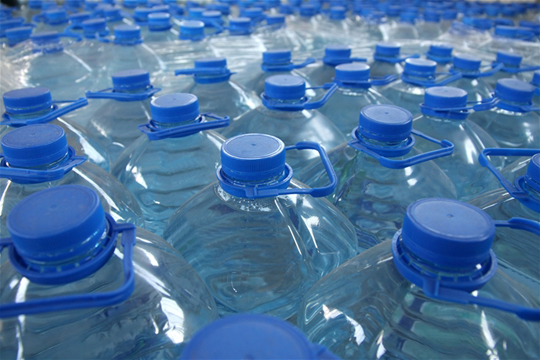
During a disaster, you will need to have an abundance of water. You cannot rely on your local grocery stores or your municipality for water during a disaster. Water is usually the first item that is sold out during a disaster as most people only have a basic 48-72 hour supply of water. You need to take precautions and make sure that your family has a generous supply of water and create a plan detailing where to find other sources of water should you run out.
Creating Your Water Supply
Just like your food supply, it is essential that you begin stocking up on water. Twenty-one days’ supply of water is ideal. Calculate the amount needed based on a minimum of two gallons per person. One gallon would be for hydration and another gallon for personal hygiene such as sponge baths and oral care. Once you have calculated the minimum amount, add between 10 and 15 percent more to account for waste, damage and for giving to others.
Where Do I Store All Of This Water?
When it comes to storing water, you can use a three-tier system. This allows you to maximize your water storage space and ensures you have room for all of the water that your family needs. Keep in mind water weighs roughly 8.5lbs/3.8kg per gallon so weight will be a factor if you have subfloors and if stored on shelving.
Tier 1
Tier 1 is comprised of water bottles and other small portable water containers. You can put these water bottles in any location that is not directly exposed to sunlight. This includes closets, cabinets, or even under your bed. These water bottles are for quick access and should be rotated regularly and once used refill from larger storage containers for easy handling. You should never store water that it is in unapproved plastic containers for extended periods. The container will deteriorate over time from exposure to light. By law, any consumable product sold in retail stores must have an expiration date on the label.
Tier 2
Tier 2 is comprised of larger bottles of water or pallets of water. These containers can be purchased at bulk discount chains. Buying in bulk is the most cost-effective way to purchase water in bulk. You can of course purchase food grade plastic water barrels and fill them at home using a water hose approved for drinking water. The barrel because of the weight would essentially have to be filled in place. A 50-gallon barrel of water will weigh in excess of 400 pounds.
Tier 3
Tier 3 is your large water containers that are meant to store large amounts of water a 1,000 gallons or more in one container. This amount of water is going to large and immobile. This water tank can be stored indoors or outdoors but you must of course consider the weight and the freeze factor. It would take extreme cold temperatures for an extended period to freeze 1,000 gallons of water but it is possible and it can rupture the storage container if it were to freeze solid.
Other Sources of Water
You want to make sure you have enough water for an extended period of time, but what happens if you need to find additional sources of water? Understanding where to find additional water sources and how to filter and purify the water can dramatically increase your odds of survival. This skill is essential especially if you have already evacuated and you cannot rely on your water supply at your new safe house.
Sources of water include public and private swimming pools, public lakes, ponds and water features.
Filtering and Treating Water
When finding a new water source it is imperative that you take the proper course of action by filtering and purifying that water source. Drinking contaminated or toxic water can cause serious sickness or worse. Always proceed with extreme caution when drinking any type of unsanitary water. Seeking out additional water sources should always be a last resort.
Be Aware Of Chemicals
Purifying and filtering water that is contaminated with chemicals will simply not work. You need to be aware of the water source that you are selecting and you need to make sure there is no chemical contamination evident. If you have any doubts about chemicals in the water or in the immediate area, do not drink the water and move on to another location.
Use a Coffee Filter
Ensure you have coffee filters in both your supply kits and your bug-out-bags. Coffee filters are ideal for filtering out water before purifying it. Coffee filters will collect most of the dirt, debris, and sediments. Filter all water sources even if you plan to use a commercial filtering device to extend the life of the filter. Charcoal, sand and gravel can also be used as filtering mediums.
Boiling Water
Boiling your water source is the recommended method to purify the water. Between filtering and boiling you will have removed or destroyed virtually all waterborne microorganisms. Rapid boil for three minutes if you have an ample supply of water and if you have very little supply and you know you are at sea level boil for one minute. Boiling will cause you to lose water volume through evaporation so do not boil longer than recommended.
Chemical Treatment
You can purchase chemical purification tablets that will rid water of bacteria, virus and other hygienic problems. These chemical treatment packages are highly recommend due to their long shelf life and simplicity of use. You should have a supply of water purification tablets in your home emergency kit and bug-out-bag.

0 comments:
Post a Comment